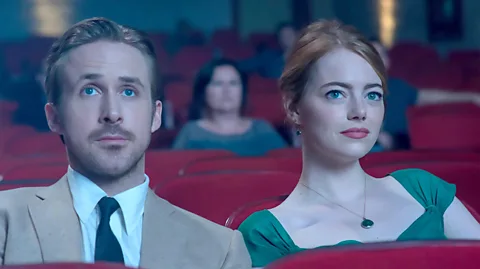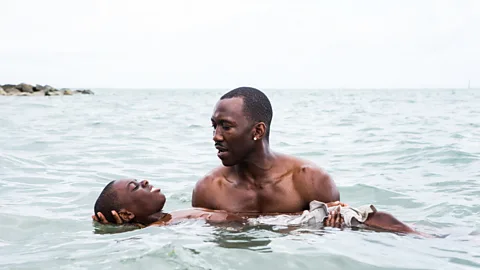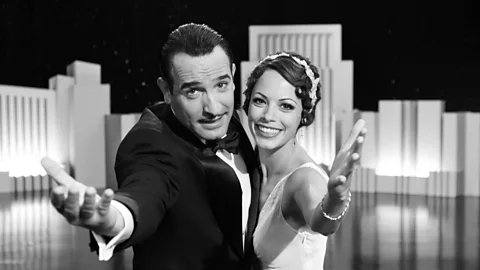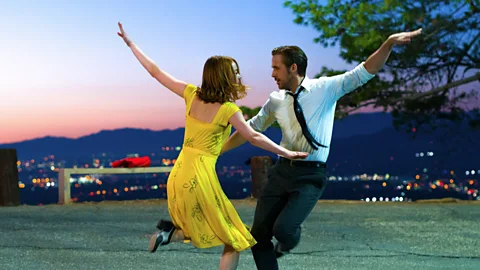Why La La Land is making history
 Lionsgate
LionsgateRomantic comedies are rarely big winners at the Oscars – but La La Land is defying the trend. Nicholas Barber explains why this film deserves its record nominations.
A month ago, La La Land made history at the Golden Globes by being the first film to win seven trophies, so it’s no surprise that Damien Chazelle’s twinkly Los Angeles musical has had more than its fair share of Oscar nominations, too. With nods in just about every conceivable category, including not one but two for best original song, it has a total of 14 nominations, thus matching the record held by All About Eve and Titanic.
Inevitably, a backlash is already well underway, not just because some people haven’t gone gaga for La La Land, but because they consider it thin and flimsy enough to float off into the air, as its characters do when they visit the Griffith Observatory. “In light of last year’s #oscarssowhite controversy,” went one article in The Economist, “many will feel that this year’s attention and critical adulation rightfully belong to more socially and politically minded fare like Moonlight, Loving and Birth of a Nation.”
It is an understandable reaction. Next to Moonlight, Hidden Figures and Fences, all of which are best picture nominees, La La Land doesn’t look too progressive. But that doesn’t mean that it is a cowardly or obvious choice for Oscar voters. The very fact that it doesn’t have an overt political message, but is still good enough to beguile awards bodies, is what makes La La Land so unusual.
 A24
A24This year’s nominees are an impressively diverse bunch, with a lot more indie curios than there used to be in the line-up. But what hasn’t changed is that the Academy is still pulled in by the gravity of weighty dramas about serious issues. Best picture winners typically deal with the horrors of child abuse (Spotlight), slavery (12 Years a Slave), war (The Hurt Locker) and poverty (Slumdog Millionaire). Even Birdman and The Artist, the most showbizzy modern winners, plunged their heroes into valleys of depression and alienation. In comparison, the healthy, attractive, gifted young dreamers in La La Land don’t have much to complain about. But that’s why the film is so remarkable and even radical in of its award-season success. At heart it is a romantic comedy - and romantic comedies are hardly Oscar bait.
No jokes please
The last one to win a best picture prize was Annie Hall in 1978. Since then, they have scarcely been nominated. Four Weddings and a Funeral was on the best picture shortlist in 1995. Broadening the definition of the genre slightly, we can include Jerry Maguire in 1997 and As Good As It Gets in 1998 - not that either of them was ever a favourite. Over the subsequent two decades, the Oscars have pretty much ignored the rom-com, despite the shortlist being expanded to fit in a potential 10 contenders in 2010. (The Artist almost qualifies, but that was more of a melodrama, and its heroine was very much a ing character.)
 Warner Bros
Warner BrosThe Academy has long been notorious for neglecting romantic comedies - and all comedies. As Jack Black joked at the 2008 ceremony, the only way for a comedian to win an Oscar is to switch to drama. “I’m gonna re-read that script about the guy who gets lead poisoning and then sues a major corporation,” he raved. “There’s not a laugh in there!” But, the Academy’s prejudice aside, it’s also apparent that Hollywood romantic comedies have been in decline since the 1990s.
Co-incidentally, Gosling must take some of the blame. Ever since he stole a zillion hearts in The Notebook in 2004, the standard film about star-crossed lovers has been a soggy adaptation of a Nicholas Sparks novel, featuring at least one cancer patient. Directors who want some comedy with their romance, meanwhile, have tended to follow the lead of the Farrelly Brothers, who equate love with physical pain and public humiliation, and Judd Apatow, who sees courtship as something to be squeezed between sessions of sweary bromantic bonding. Try to think of a recent boy-meets-girl comedy, which has been uplifting and un-ironic, without also being nauseating, and you’ll appreciate how special La La Land is.
In the dance of attraction and flirtation that comprises the film’s first half, it doesn’t put a foot wrong. Chazelle introduces Mia (Emma Stone), an aspiring actress, and Seb (Ryan Gosling), a jazz pianist, when they exchange hostile glares in the opening traffic jam. A while later, Mia is enchanted by Seb’s ivory-tinkling in a restaurant, but he is so upset about being fired that he barges past her and disappears into the street.
 Lionsgate
LionsgateBy this stage in the average 21st-Century romantic comedy, the lead characters would have got drunk, had sex and then moaned to their respective buddies that they had made an embarrassing mistake. But Chazelle uses the film’s first act to establish Mia and Seb’s individual careers and ions. When they finally get around to having a conversation, the audience is primed and ready for them to fall in love. And even then, the pacing has a relaxed, breezy confidence.
There is the delicious scene in which Mia taunts Seb at a pool party as he plays in an ‘80s cover band, her sarcastic enthusiasm echoed satisfyingly when she dances to his jazz improvisation later on. There is the twilit drift back to their cars after the party, the getting-to-know-you stroll through a Hollywood backlot, the cinema date Mia almost misses, and, at last, the Griffith Observatory nocturne. To quote Judd Apatow: “When comedies work, they feel effortless, so people think misery is harder to create.” The old-fashioned relationship in La La Land does feel effortless. But if it wasn’t hard, how come nobody except Chazelle is creating anything like it?
 Lionsgate
LionsgateOne piece of luck was that the lead actors he initially cast, Emma Watson and Miles Teller, dropped out, clearing the way for the sheer likeability and easy compatibility of Stone and Gosling, who had already starred opposite each other in Gangster Squad and Crazy, Stupid, Love. The key to their chemistry - apart from their industrial quantities of charm - is their sharply contrasting acting styles. Stone’s emotions pour out of her. Whether Mia is angry or elated, her feelings are written all over her face, and not just on those massive eyes. Gosling, one of Hollywood’s most magnetic underplayers, prefers to restrict himself to a smirk or a raised eyebrow, and it’s this imbalance that has the viewer desperate for Seb to be as open and generous as Mia is.
There is more to La La Land than the way the actors and the characters connect, of course. It got those 14 Oscar nominations for its flowing camerawork, the Pop Art brightness of its costumes and production design, and the toe-tapping songs by Justin Hurwitz. But it’s the magic in that buoyant first hour that makes it worthy of the awards it has been and will be given: the magic of an exquisitely constructed comedy about two people who make beautiful music together.
If you would like to comment on this story or anything else you have seen on BBC Culture, head over to our Facebook page or message us on Twitter.
And if you liked this story, sign up for the weekly bbc.com features newsletter, called “If You Only Read 6 Things This Week”. A handpicked selection of stories from BBC Future, Earth, Culture, Capital, Travel and Autos, delivered to your inbox every Friday.
